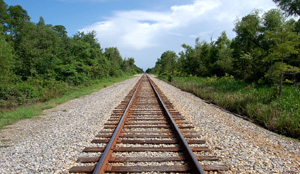Govt inks deal on Chipata-Mchinji railway line.
Published on April 4, 2012 at 8:58 AM by FACE OF MALAWI
 THE Zambian Government is in the process of signing a Memorandum of Understanding (MoU) with Central and Eastern Africa Railway Systems (CEARS) to operate the 24-kilometre stretch of the Chipata-Mchinji railway line.
THE Zambian Government is in the process of signing a Memorandum of Understanding (MoU) with Central and Eastern Africa Railway Systems (CEARS) to operate the 24-kilometre stretch of the Chipata-Mchinji railway line.
The railway line is expected to connect Zambia, Malawi and Mozambique, members of the growth triangle, to the port of Nacala.
In an interview in Chipata yesterday, Eastern Province Permanent Secretary Hlobotha Nkunika said the Zambian Government, together with CEARS, was in a process of signing for the running of the stretch into Zambia.
Mr Nkunika explained that a contract has been signed between CEARS and Lafarge Malawi to transport clinker, an ingredient used in the manufacturing of cement, from Chipata to Malawi using the railway line.
The Chipata-Mchinji rail line was conceived in 1982 as a bilateral project between Zambia and Malawi.
With assistance of the Canadian government, Malawi managed to complete the construction work on its side while works on the Zambian side stalled due to lack of funds.
Only 24 kilometres of the rail line was remaining to connect Zambia to Malawi.
The project on the Zambian side was only revitalised in 2006 with a tune of US$10 million, and was officially commissioned by the fourth Republican president, Rupiah Banda together with his Malawian counterpart, Bingu wa Mutharika on August 27, 2010.
Despite it being officially launched, the rail line has not been operational because of lack of a dry port to handle imports and exports.
Mr Nkunika said the Chipata-Mchinji railway project was still on course, and dismissed suggestions that the line could turn into a “white elephant” after two decades without completion.
He said a number of things were being done to ensure that the line became fully operational before the end of June this year.
“The Chipata-Mchinji rail project is still on course and a number of things are being done to ensure that it becomes fully operational before the end of June 2012,” Mr Nkunika said.
He explained that the critical component that had delayed the project was the construction of support infrastructure, which includes access roads to the rail station and construction of a dry port.
Regarding the access roads, Mr Nkunika said one the turn-offs from the main rail crossing to the railway station had been completed.
He, however, said the road had not been opened up for use as the Government was still waiting for the rain to end.
On the dry port, Mr Nkunika said a feasibility study had been conducted and a preliminary report had been released.
He said the second phase under the construction of a dry port would look at the development of the design which would also include another access road that would pass through St Monicas Secondary School from the Great East Road to the railway station.
“The project has taken long to be in operation due to lack of funds to put up the support infrastructure which includes access roads and the dry port.
“These have been the main challenges that have delayed the operation of the Chipata-Mchinji railway project.”
Mr Nkunika, however, said he was happy that works on the station building and the railway line had been completed and ready for use.


